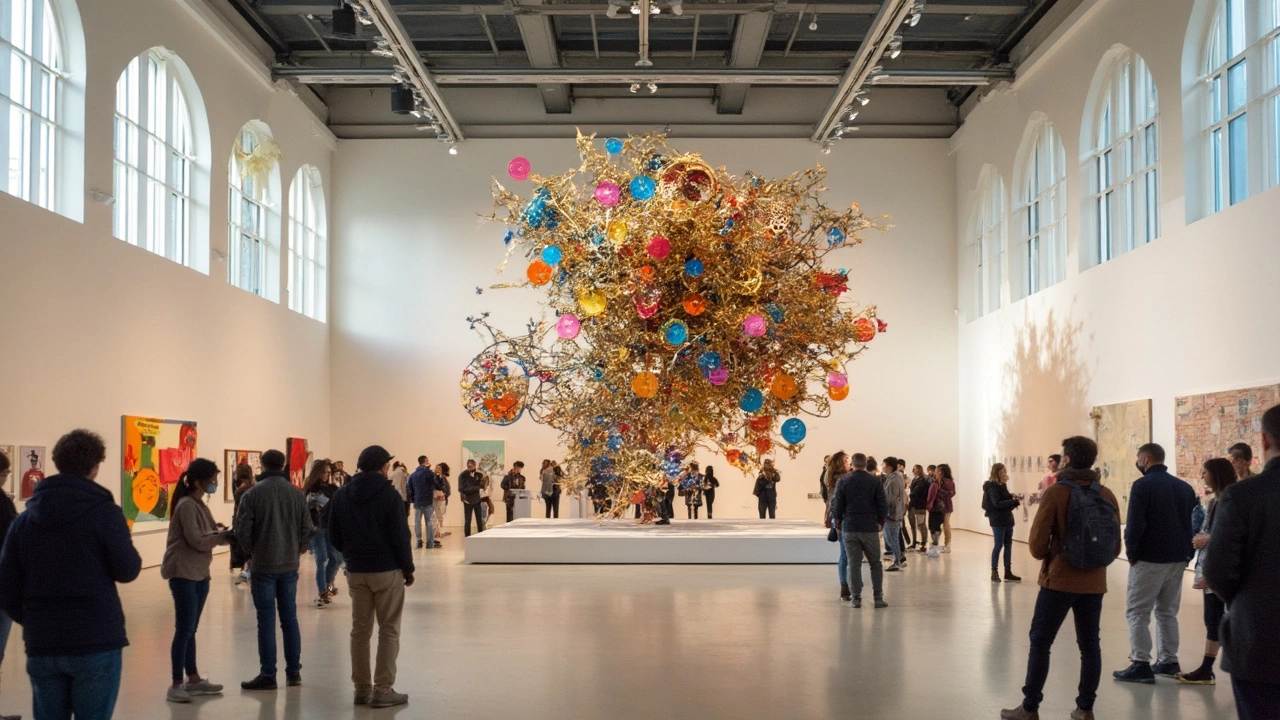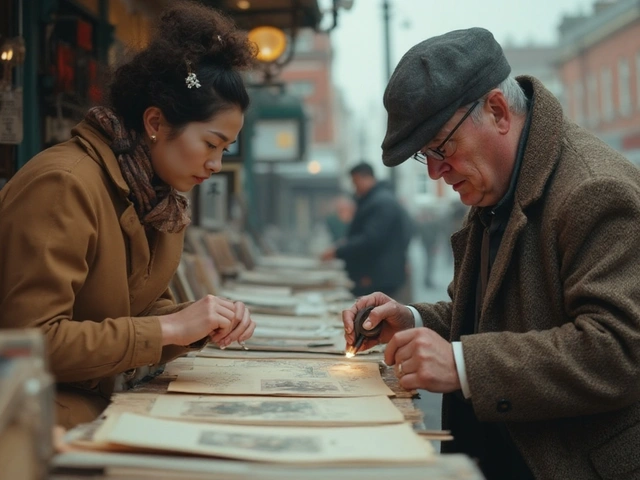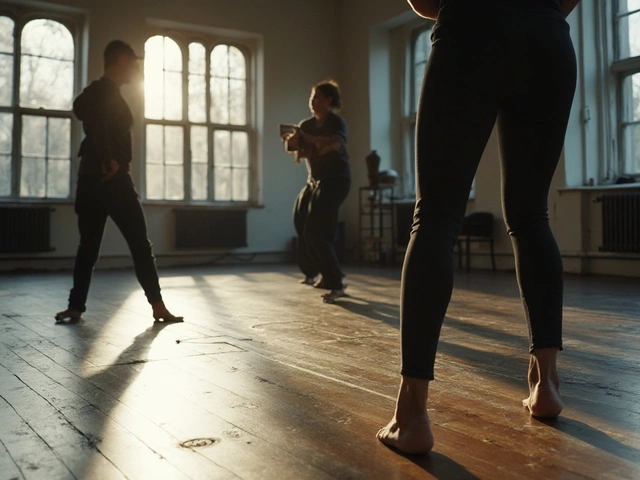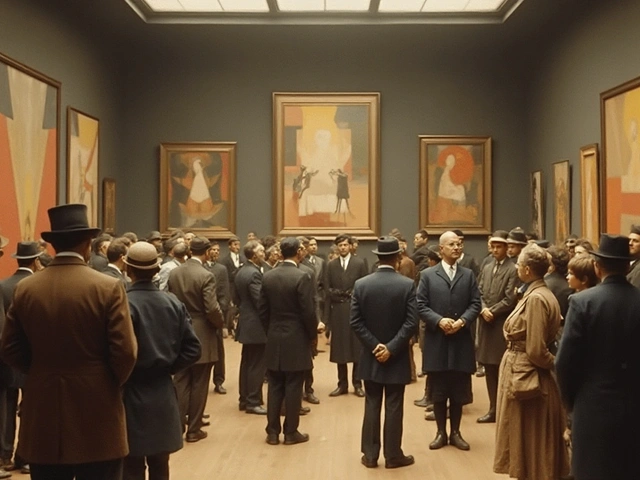Kinetic art, at its core, is like art on the move—literally. Picture sculptures that come alive with a breath of air or a flick of a switch. It’s an art form that doesn’t just sit on a pedestal waiting for admiration; it demands interaction, curiosity, and a touch of wonder.
Back in the day, artists aimed to make their work more than static objects. They wanted to include movement, shine a spotlight on change, and add an element of surprise to their creations. This idea started gaining traction around the 1920s and 30s, with influences from Dada and Futurism, ultimately evolving into a recognized form by the mid-20th century.
This style isn't only about mesmerizing movement; it’s also about capturing how art fits into the ever-changing dance of modern life. From wind-powered installations to motorized structures, kinetic art often dips its toes in the waters of science and engineering. And trust me, some pieces are like magic—the kind of work you can't help but stare at with wide eyes, trying to figure out what makes it tick.
- Origins of Kinetic Art
- Famous Kinetic Art Pieces
- Materials and Techniques
- Interaction and Engagement
Origins of Kinetic Art
The concept of kinetic art didn't just pop up overnight. It has roots that trace back to the early 20th century when artists began to break the mold with the idea that art could move. This movement, pun intended, was all about shifting away from static displays to pieces that could engage and interact with their environment and viewers.
Let's talk about Marcel Duchamp, one of the early influencers in this realm. In 1913, he introduced the 'Bicycle Wheel', which was just what it sounded like—a bike wheel mounted on a stool. It was simple yet groundbreaking, as it challenged traditional thoughts on what art could be. Duchamp's playful approach laid crucial groundwork for subsequent developments in movement in art.
The trailblazers didn’t stop there. In the 1920s and 30s, artists from the Futurist and Constructivist movements took the baton, imagining a future where art and technology intertwined. Names like Naum Gabo and László Moholy-Nagy pushed boundaries by incorporating motors and other mechanisms, creating an active experience rather than a passive view.
The Influence of Technology
As the industrial era matured, technology's impact became more palpable. The art world was no exception. Artists began to embrace the possibilities of motors, gears, and other mechanical elements to bring their creations to life. This marriage of art and engineering birthed a new era of work that was not only visually compelling but physically dynamic.
Key Developments
- 1920s and 1930s: Kinetic principles start to emerge, influenced by modernist movements.
- Post-WWII: The concept takes off with increased artistic freedom and technological advances.
- 1960s: The kinetic art movement hits its stride; artists like Alexander Calder become prominent figures.
Fast forward to the 1960s, and kinetic art was in full swing with artists like Alexander Calder, whose 'mobiles' became iconic. These floating, twirling sculptures brought movement to new heights and captivated audiences worldwide.
Ultimately, the origins of kinetic art reveal a history rich with innovation and daring steps away from traditional artistry. By incorporating movement, artists found ways to capture not just a single moment in time but an evolving narrative, echoing the rhythm and dynamism of the modern world.
Famous Kinetic Art Pieces
When it comes to kinetic art, some pieces have made a name for themselves, standing out like bright stars in the art cosmos. These pieces don't just move; they shift perspectives and make viewers rethink what art can truly be.
Jean Tinguely — Homage to New York
One of the most legendary pieces is Jean Tinguely's 'Homage to New York.' It was an event more than just an artwork. Back in 1960, this self-destructing machine had a brief but memorable life in the garden of the Museum of Modern Art. It whirred, clicked, and eventually collapsed in on itself in a fit of mechanical chaos. A perfect reflection of the unpredictability of movement in art.
Alexander Calder — Mobiles
Then there's Alexander Calder, often a go-to name when talking movement in art. His mobiles, like 'Lobster Trap and Fish Tail,' are instantly recognizable. They hang, suspended in balance yet ever-shifting with any draft. Calder masterfully uses simplicity to engage and delight, proving that sometimes less really is more when harnessed properly.
Naum Gabo — Kinetic Construction (Standing Wave)
Naum Gabo's early masterpiece, 'Kinetic Construction (Standing Wave),' breaks the mold again. Made in 1920, this work used a motor to create a visual experience that was ahead of its time. With just a simple rod and motor, Gabo brought movement and rhythm into a world mostly used to still life and portraits.
Yaacov Agam — Double Metamorphosis III
Last but not least, let's chat about Yaacov Agam's 'Double Metamorphosis III.' This piece truly plays with perspectives. As you move around it, the colors and shapes seem to change right before your eyes. It's like a kaleidoscope that's constantly reimagining itself, drawing viewers to step closer, tilt their heads, and wonder, "What's happening here?"
These kinetic art pieces show that art can be as dynamic as life itself. They make you stop, look twice, and realize that in the dance of movement and color, there's a world of discovery waiting to unfold. Fascinating, right?

Materials and Techniques
Diving into kinetic art, one of the first things you'll notice is how varied the materials can be. Artists in this field aren't just painters—they're tinkerers, builders, and sometimes even amateur engineers. Let's break down some materials and techniques that make kinetic art tick.
Materials Matter
Common materials include metals like aluminum and steel, chosen for their durability and ability to withstand constant movement. Metals can be shaped, bent, and twisted—ideal for building large sculptures that can endure the elements.
Glass and plastics are also popular. They bring in the colors and transparency that add depth and intrigue. And don’t forget wood, a classic choice for its warmth and versatility. Depending on the effect the artist wants, the wood can be left raw or finished with stains.
Techniques to Know
Kinetic art isn’t just about what it's made of; it's also about how it moves. Here are some key techniques:
- Wind-Powered: Some kinetic sculptures are designed to move with the wind. Outdoor installations, like those by famous artist Anthony Howe, often use wind to stir their intricacies and captivate onlookers.
- Motorized: Others use motors and gears to ensure consistent motion. These pieces might rely on electricity or solar power to come to life, showcasing the blend of art and tech.
- Magnetic Force: Some artists harness magnetic forces to create levitating effects or subtle vibrations that change the viewer's perspective as they move through the space.
These techniques, combined with varied materials, let artists create sculptures that sway, spin, and hypnotize. Whatever the method, a hallmark of kinetic art is its ability to engage viewers on a sensory level, turning passive observation into an active experience.
Interaction and Engagement
Unlike traditional art forms that you simply gaze upon, kinetic art invites you to step inside its world. It might be as simple as a gentle breeze spinning parts of a sculpture or you using a crank to set things in motion. The key point is, you're part of the story.
Interactive art can be a blast to experience, and it's not just for show. It pushes artists to think about how a viewer will interact with their piece. For instance, Jesús Rafael Soto's Penetrables are famous structures—made of long, dangling tubes—that invite folks to walk right through them. It’s not only about watching; it’s about immersing.
High-Tech Marvels
Thanks to advancements in technology, kinetic artists have a new playground. Imagine pieces that change depending on who's interacting with them or sculptures that light up as you approach. High-tech sensors, motors, and even AI are making it possible.
Let’s talk data for a second: the addition of tech has seen a rise in visits to galleries showcasing dynamic exhibits. A recent gallery study indicated that kinetic art installations draw 40% more visitors than static shows. Fun fact, right?
Creating a Personal Connection
At its heart, interactive art is about making art personal. It changes depending on the person, the time, or the place. Take Alexander Calder's mobiles, for example. These creations catch slight shifts in air currents, leading to a dance that's never quite the same. Each visit offers a fresh experience.
So next time you find yourself in front of kinetic art, don’t hesitate. Move, touch, engage—you're not just a spectator; you’re part of its lifeline.




